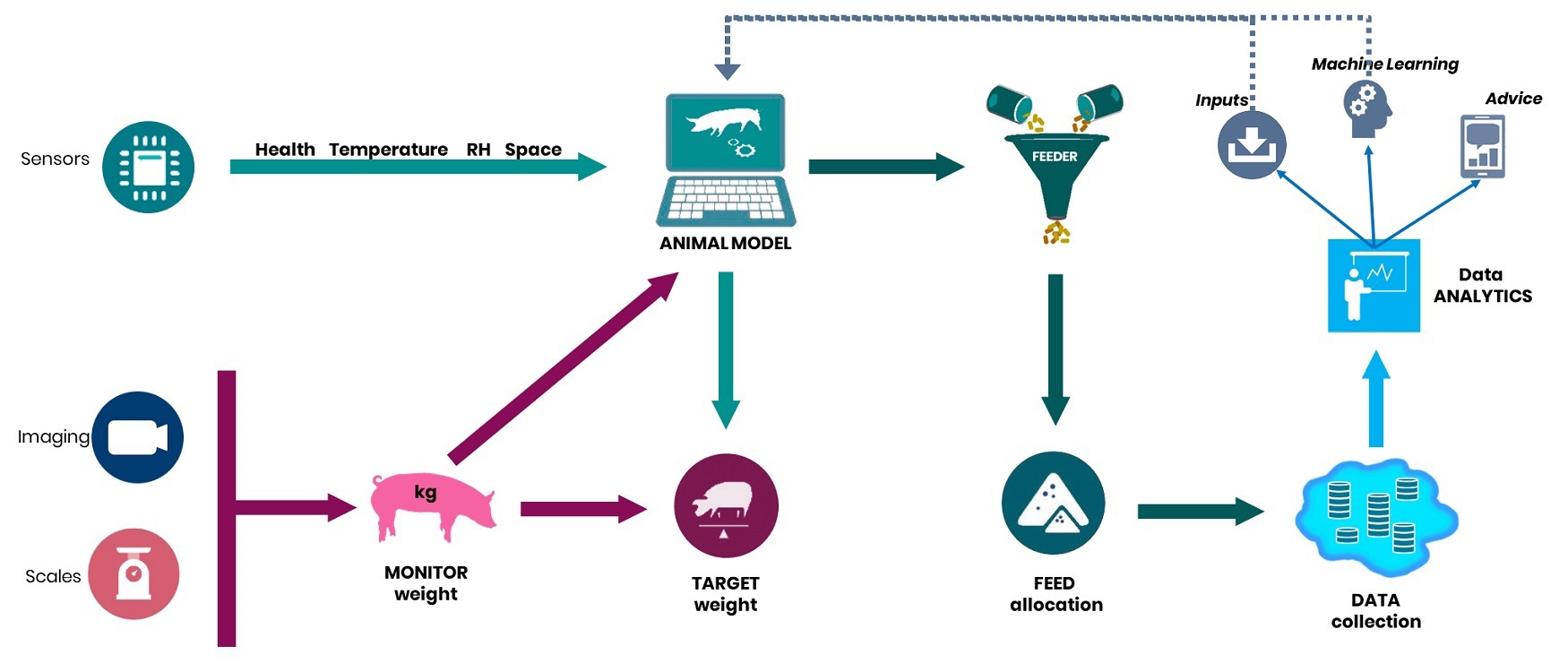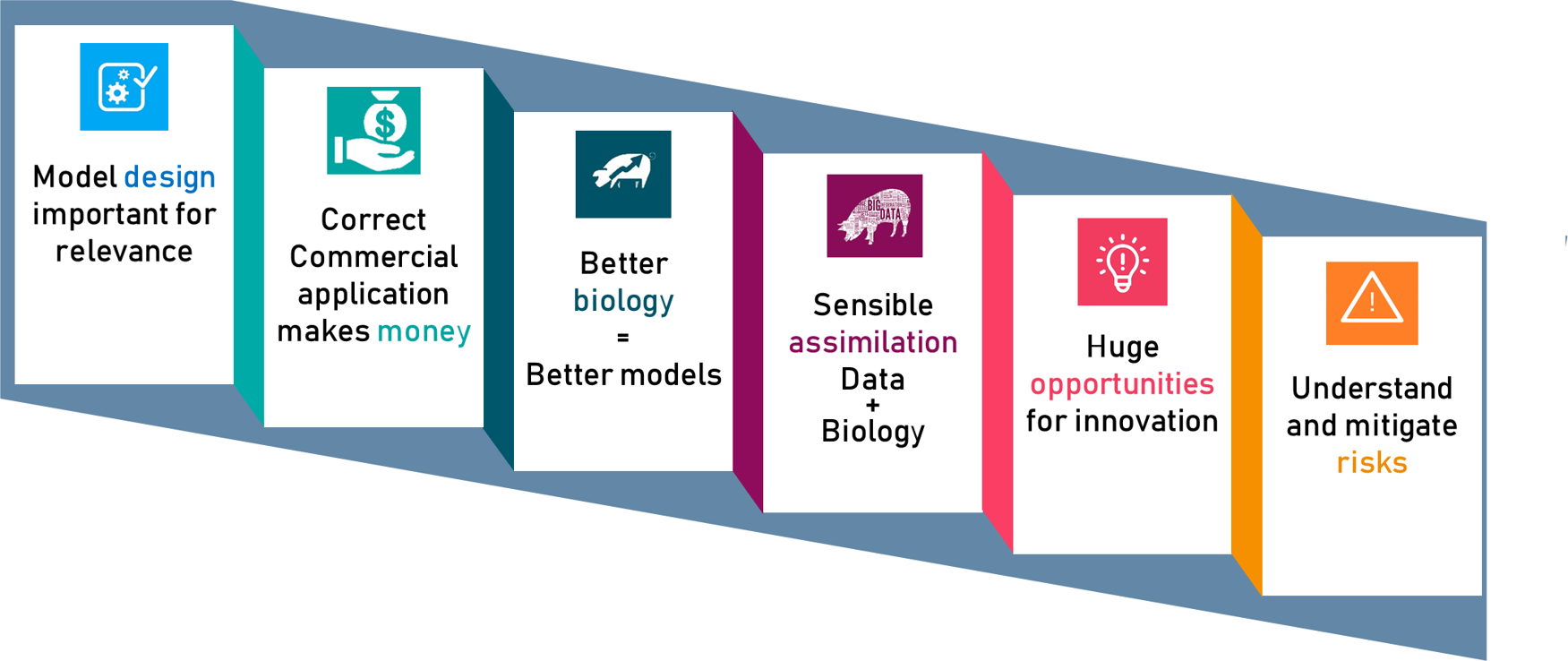What you should know about the commercial relevance of nutritional models
- R&D
- Sustainable precision farming
- 2021
- Swine
This August, Neil Ferguson, Animal Modelling scientist at Trouw Nutrition, shared his expertise on nutritional models in animal production at the International Swine Nutrition Conference in the USA. This conference is aimed at the swine industry and academia, and covers the latest developments in swine nutrition and what the future will hold for the industry. Did you miss it? Not a problem – we've got you covered with an outline of Neil’s presentation on the commercial role and relevance of nutritional models.

The growing potential of animal models
Over the last five decades, it has been demonstrated that integrated nutrition models based on a sound biological framework will continue to help pig producers, integrators, and animal nutrition companies retain sustainable profitability. As our understanding of animal biology and nutritional metabolism continues to improve, so too does the accuracy and applicability of these models.
Specifically, scientific advancements now enable us to accurately predict post-weaning growth and feed intake, as well as to incorporate gut health additives into mechanistic animal models. As a result, the role of models has expanded beyond providing only nutrition solutions, to providing practical day-to-day management advice to improve efficiency and profitability.
An example of hybridization in animal modelling

Embracing the industry’s changing technology landscape does not mean accepting every digital solution offered, but rather understanding the commercial and technical risks and developing appropriate mitigation strategies. Where these strategies optimise both mechanistic and machine-learning models, they will improve the welfare of people, planet, and profit
Embracing a changing technology landscape
With the expansion of the Internet of Things and the increasing application of digitalisation to animal production, a new frontier has opened: science and technology have combined to increase automation and enable more rapid real-time decision-making options. As these resource-demanding technologies advance, the animal nutrition industry’s challenge is investing wisely in a way that extracts value for customers and company.
Sensibly assimilating data and biology, rather than blindly embracing a technology-driven agenda, could provide huge opportunities for innovation in the animal nutrition industry. Embracing the industry’s changing technology landscape does not mean accepting every digital solution offered, but rather understanding the commercial and technical risks and developing appropriate mitigation strategies. Where these strategies optimise both mechanistic and machine-learning models, they will improve the welfare of people, planet, and profit.
Conclusions


About Neil Ferguson